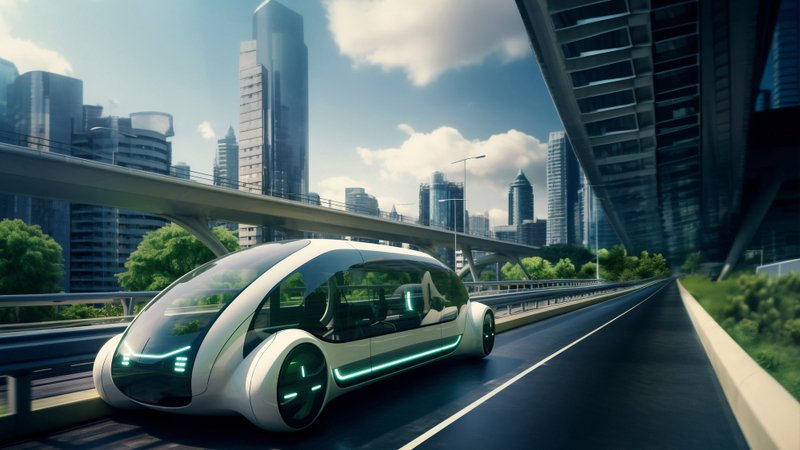The advancements in driverless car technology have reshaped the automotive industry and our perception of transportation. From cutting-edge AI systems to enhanced safety mechanisms, the newest innovations in autonomous vehicles promise a future of seamless, safe, and sustainable mobility.
This article explores the latest developments in driverless car technology, its benefits, challenges, and the future it holds for transportation.
What is Driverless Car Technology?
Driverless cars, also known as autonomous vehicles (AVs), operate without direct human intervention. Using a combination of sensors, cameras, artificial intelligence, and machine learning, these cars can navigate roads, make decisions, and perform driving tasks safely and efficiently.
The Society of Automotive Engineers (SAE) has categorized automation into six levels, ranging from Level 0 (no automation) to Level 5 (full automation). While many vehicles today incorporate Level 2 and Level 3 automation, Level 4 and Level 5 technologies are under active development.
Core Technologies Behind Driverless Cars
1. Artificial Intelligence and Machine Learning
AI and machine learning algorithms play a critical role in driverless technology. They process vast amounts of data from sensors and cameras to make real-time driving decisions. These systems continuously learn and improve by analyzing various traffic scenarios, enabling cars to adapt to complex environments.
2. Advanced Sensor Systems
Modern autonomous vehicles are equipped with state-of-the-art sensors:
- LIDAR (Light Detection and Ranging): Measures distances and maps surroundings using laser pulses.
- Radar: Detects objects, especially in poor visibility conditions.
- Cameras: Capture real-time images for lane detection and traffic sign recognition.
- Ultrasonic Sensors: Assist in close-range detection for parking and obstacle avoidance.
3. Vehicle-to-Everything (V2X) Communication
V2X technology allows autonomous cars to communicate with other vehicles, infrastructure, and pedestrians. This ensures better coordination, minimizes collisions, and enhances traffic flow.
4. High-Definition Mapping (HD Maps)
Driverless cars rely on HD maps for precise navigation. These maps provide detailed road layouts, lane configurations, and elevation changes, ensuring accurate route planning.
5. Enhanced Computing Power
The processing power of autonomous cars has significantly improved with the advent of specialized chips and processors. Companies like NVIDIA and Intel have developed automotive-grade hardware capable of handling complex computations in real-time.
Latest Innovations in Driverless Car Technology
1. Fully Autonomous Ride-Hailing Services
Companies like Waymo, Cruise, and Tesla are piloting fully autonomous ride-hailing services. These services operate without human drivers and promise to revolutionize urban mobility by offering cost-effective and convenient transportation solutions.
2. Improved Autonomous Parking Systems
Advanced self-parking systems allow cars to identify parking spaces, maneuver into tight spots, and even park in multi-story garages autonomously. This technology is especially beneficial in congested urban areas.
3. Energy-Efficient Autonomous EVs
The integration of autonomous technology with electric vehicles (EVs) is driving sustainability. AI-powered battery management systems optimize energy consumption, extending the driving range and reducing carbon emissions.
4. Remote Monitoring and Control
Some driverless car systems include remote monitoring features, enabling operators to supervise and intervene if necessary. This technology is particularly useful for fleet management in ride-sharing and delivery services.
5. Adaptive Cruise Control with AI
AI-powered adaptive cruise control adjusts speed dynamically based on traffic conditions. It can also predict and respond to sudden changes, ensuring smoother and safer driving experiences.
Benefits of Latest Driverless Car Technology
1. Enhanced Safety
Autonomous vehicles aim to reduce road accidents caused by human error. Advanced safety features like collision avoidance, automatic braking, and lane-keeping assist contribute to safer journeys.
2. Increased Efficiency
Driverless cars optimize fuel usage, reduce traffic congestion, and improve time management by selecting the most efficient routes.
3. Accessibility
Autonomous technology provides mobility solutions for people with disabilities, the elderly, and those unable to drive, promoting inclusivity.
4. Environmental Sustainability
Electric autonomous vehicles help lower greenhouse gas emissions and support global sustainability goals.
5. Economic Opportunities
The development and deployment of autonomous vehicles have created job opportunities in technology, manufacturing, and infrastructure development.
Challenges Facing Driverless Car Technology
Despite its promise, driverless car technology faces several hurdles:
1. Legal and Regulatory Issues
Governments worldwide are working to establish regulations for autonomous vehicles. These include standards for liability, safety, and data privacy.
2. High Development Costs
The research, development, and testing of autonomous technology require significant investment, making it accessible primarily to large corporations.
3. Public Trust and Acceptance
Building public trust in autonomous vehicles is crucial. Concerns over safety, reliability, and data security need to be addressed through transparency and education.
4. Infrastructure Requirements
Driverless cars depend on well-maintained roads, updated traffic signals, and robust communication networks. Upgrading infrastructure to meet these requirements can be challenging for many regions.
Companies Leading the Way in Driverless Technology
1. Tesla
Tesla’s Autopilot and Full Self-Driving (FSD) features have been at the forefront of semi-autonomous technology. The company continues to push boundaries with over-the-air updates and AI advancements.
2. Waymo
A subsidiary of Alphabet, Waymo focuses on Level 4 and Level 5 automation. Its fully autonomous ride-hailing services are being tested in multiple cities.
3. Cruise
Backed by General Motors, Cruise is developing electric, autonomous vehicles designed for urban transportation and delivery services.
4. Baidu
China’s Baidu is a leader in autonomous driving research, with its Apollo platform offering open-source solutions for AV developers.
5. NVIDIA
NVIDIA provides high-performance processors and AI solutions for autonomous vehicle systems, enabling real-time decision-making.
The Future of Driverless Car Technology
The future of autonomous vehicles is promising. With continuous innovation, we can expect:
- Wider Adoption: Fully autonomous cars becoming mainstream by 2035.
- Smart Cities: Integration of AVs into smart city ecosystems for seamless transportation.
- Shared Mobility: Growth in autonomous ride-sharing and carpooling services.
- Advanced AI: AI systems capable of understanding and reacting to human behavior on the road.
Conclusion
Driverless car technology is shaping the future of transportation by prioritizing safety, efficiency, and sustainability. While challenges remain, advancements in AI, sensor systems, and energy efficiency continue to drive progress. As governments, manufacturers, and tech companies collaborate, the dream of a fully autonomous future inches closer to reality.
